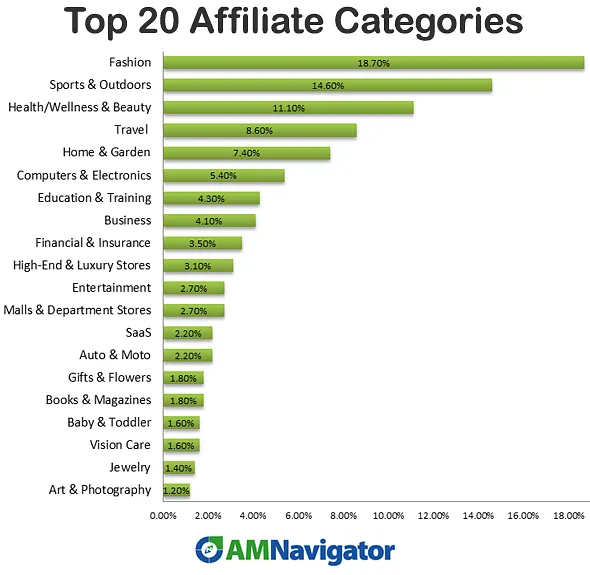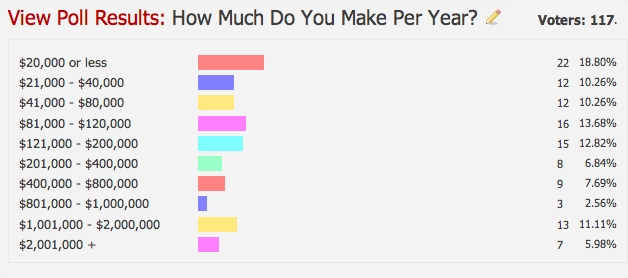Reading Time: 16 Minutes
With so many partnership opportunities available for brands, knowing which option is best often comes down to a single question.
What is my objective?
Affiliate marketing allows brands with a low budget to market their products effectively, and guarantees a positive return on investment. The added bonus of increasing brand awareness and business growth makes it an essential tool that every marketer should have in their arsenal.
Affiliate marketing is a word-of-mouth marketing technique brands use to drive sales by leveraging the advertising and promotional skills of their own consumers.
Brands typically use affiliate marketing to drive website traffic and increase conversions. Its performance-based structure means brands only have to pay affiliates who get results, with the top performing affiliates incentivized by higher payouts to continue driving traffic and sales.

That’s why affiliate marketing is one of the most cost-effective strategies for ecommerce brands. In fact, 81% of brands relied on an affiliate program in 2021. Collectively, those affiliates were responsible for more than 5 billion clicks, leading to more than 170 million transactions worldwide.
In affiliate marketing, brands give an affiliate link (a unique URL) to a content creator who then showcases the link on their website, blog, or social media channel. When a visitor uses that link to make a purchase, the affiliate earns a commission.

Download full image
Brands have the option to work with affiliate marketplaces or directly with affiliates. To qualify, affiliates usually have to apply or submit an affiliate request. Most affiliates have to meet a certain set of criteria and agree to terms before they can start selling. In general, qualified creators become affiliates at no cost to themselves, except for what they choose to invest in their personal brand.
Traditional affiliate marketing exists within a massive marketplace that connects prospective affiliates to hundreds – or even thousands – of brands. The Amazon Associates Program is currently the largest affiliate marketing program in the world with millions of different products and programs available to help affiliates earn a commission.
Although these marketplaces are the most common way for affiliates to monetize content, they do come with a downside. For example, most marketplaces require signup and monthly fees. That means affiliates could find themselves in the red if they fail to make their quota in a given month.
It’s also common to find many affiliates involved in these massive marketplaces promoting the same product. This not only leads to unnecessary competition but also makes consumers perceive those affiliates as inauthentic and untrustworthy.
Popular affiliate marketplaces and their commission rates include:
Similar to Traditional Affiliate Marketing, Transactional Affiliate Marketing has little to no brand focus. For example, an affiliate might promote 20 different products on their blog with affiliate links associated with each. Many affiliate sites simply focus on comparing prices or sharing coupon codes, so the audience to such sites might not be relevant to your brand.
This approach is a bit like throwing spaghetti – or in this case, affiliate links – against the wall to see what sticks. A few links may convert, but the vast majority will fall flat, making your program messy and lacking any real value to customers.
Affiliate marketing with content creators is the best way to maximize returns on your program. Creators will share your brand story while also helping you sell products. But keep in mind, that the most important part of this approach is making sure you choose the right creator to represent your brand.
The right creator is someone with a high engagement rate and a niche audience aligned with your brand. This creator’s followers will pair nicely with your ideal buyer persona and are more likely to be interested in your products. When you collaborate with the right creators, your message is sure to resonate with your target audience.
Successful affiliate marketing has to start with a strong foundation. If you are thinking of getting your own affiliate marketing program off the ground, keep the following points in mind before you launch.
The first step is to set goals and KPIs for your affiliate program. Most affiliate programs focus on conversions and sales, but you can also leverage affiliates to increase brand awareness and website traffic.
Do some digging before you choose a creator to represent your brand. The last thing you want is to bring on an affiliate that will hurt your brand’s reputation by spamming and harassing your consumers or violating consumer privacy laws.
Once you’ve found the right affiliates, set some boundaries and establish best practices for bringing in new customers. Clearly state all the do’s and don’ts of your program so everyone is on the same page from the start.
Get your terms and conditions in writing, and make sure every affiliate agrees to those standards before they start selling your products.
Do not launch your affiliate program until you examine your price point closely. If you fail to take certain costs into account, you could easily find your program is actually costing you money. And by then, it’s too late.
Consider the cost of goods sold (COGS), product discounts, and commissions ahead of time. Then subtract all of these costs from your price to make sure your program will actually turn a profit.
Manually tracking your affiliates’ performance overwhelms your staff and leads to mistakes. Your program will be far more successful if you have a platform that automatically keeps track of your affiliate content and sales.
Program plugins and coupon code generators are fine for smaller programs. But as you scale, you will need a platform that integrates with your ecommerce platform and can keep track of affiliate performance, sales, communication, contracts, and more.
Automation is most critical for attribution. No one will want to work with you if you develop a reputation for not crediting affiliates with an earned sale – even if it is unintentional.
Your commission structure must be high enough to incentivize affiliates and low enough to maintain a reasonable price point.
You’ll also need to define which conversions are eligible for commission and when you will issue payouts for each one.
The profitability of affiliate marketing programs varies. But with a strong foundation, the right players in the right positions, and a little bit of patience, the sky is truly the limit for what your affiliate marketing program can bring in.
To get the most out of your affiliate marketing program, keep these three payment structures in mind to implement based on your campaign goals:

Some notable examples of successful affiliate marketing include:
Each of these high earners have two major things in common: a clearly defined niche and solid rapport with their audience. To be successful in affiliate marketing, brands – as well as prospective affiliates – must develop both to achieve the highest possible ROI.
Finding the right affiliates for your program can be a daunting task, especially if you’re new to affiliate marketing. It’s important to start small at first and focus on a specific audience. A few great places to find affiliates are:
The best way to invite an affiliate to your program is by contacting them via email. If they don’t have an email address readily available, send them a private message on Instagram, Facebook, or wherever you view their content.
Start the message with something personal that relates to the influencer’s content. Next, provide a brief, high-level explanation of your brand (but still try to keep it as short as possible). End the message by asking the creator if they are interested in partnering with you.
That first contact with an influencer tells them a lot about your brand. What you say and don’t say in your initial outreach email tells the creator whether or not you know your audience or are interested in a meaningful partnership. More importantly, your message tells the influencer whether you know your expectations for them.
You will need to establish program objectives and KPIs to determine if your affiliate program is effective. The best KPIs have assigned metrics and a deadline.
Some common metrics to consider are:
Tracking these metrics manually will become a headache as you try to scale your program, so you will need to find the right affiliate management platform to streamline the process. The right platform allows you to integrate your affiliate program with your ecommerce store, manage discount codes, sync inventory, generate affiliate links, and more.
Affiliate marketing is an ideal low-budget approach to help grow brand awareness and business growth. By partnering with creators that align with a set vision and clearly stated objectives, brands can ensure their story is shared in a way that resonates with their target audience and maximizes their return on investment.
Are you ready to stake your claim in the creator economy? Discover more helpful tips and resources from the experts at GRIN: Creator Management Learning Center
Our team keeps a finger on the pulse, so you’re always working with the latest information.